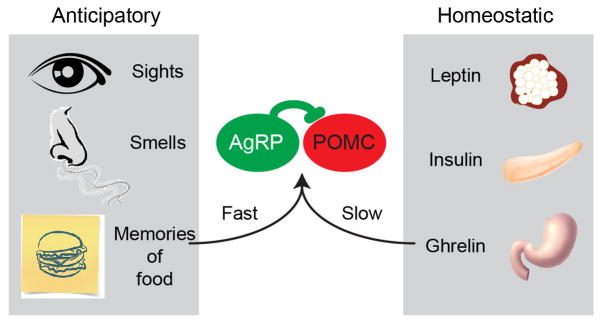Figure 3.
Fast and slow regulation of AgRP and POMC neurons by anticipatory and homeostatic signals. (Right) Circulating hormonal signals such as leptin, ghrelin, and insulin have traditionally been thought to play a primary role in the regulation of AgRP and POMC neurons. The levels of these signals fluctuate slowly over minutes to hours in accordance with changes in nutritional state. (Left) In vivo recordings however revealed a dominant role for anticipatory signals in the regulation of AgRP and POMC neurons. These anticipatory signals are triggered by sensory cues from the outside world and communiated by neural input, and therefore develop much faster than hormonal changes. In addition, these anticipatory signals precede rather than respond to changes in the nutritional state of the body.

